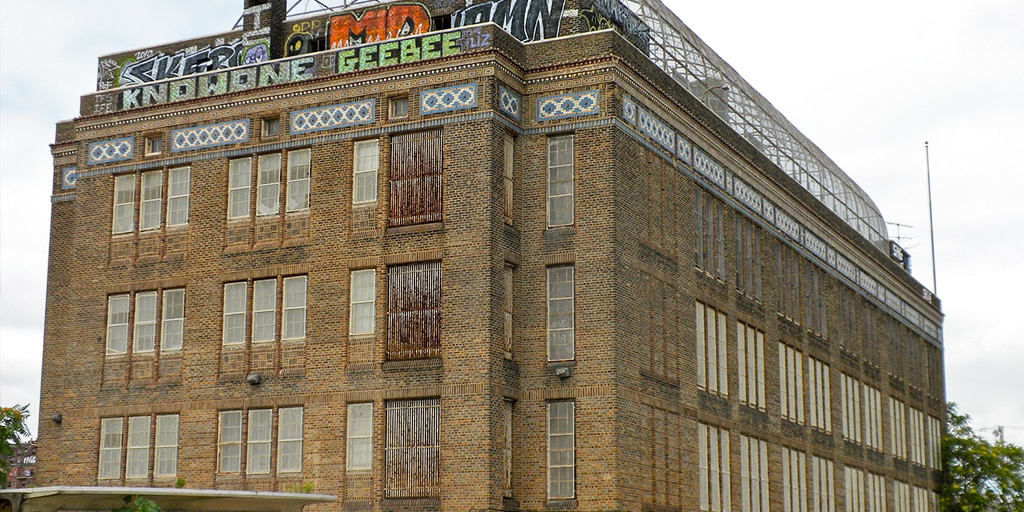Thursday, March 7, 2013 was a cold wintry day in Philadelphia where more than 500 protesters gathered in the street outside the school’s district headquarters to speak out against the issue being debated indoors: the closure of 27 area schools.
Inside the building, 32 students and parents made impassioned speeches calling to stop the closures, and 19 protesters were arrested for blocking doorways as they tried to prevent the School Reform Council from entering the room to make their final decision.
This fearless effort was futile and the Council voted to close a total of 23 schools by the summer of 2013. School closures continue in Philadelphia even now, and each closure of an educational institution can potentially leave a void in the complex and beautiful social fabric of the city.
With adaptive reuse of educational structures, that void can be filled.
The Benefits of Using Old Schools for Adaptive Reuse
Though the large size of schools can make them seem awkward for adaptive reuse projects, these structures boast many benefits that other types of buildings don’t have. One of the main benefits lies in their style.
Collegiate Gothic style, a popular architectural design for school buildings erected between the late 19th and early 20th centuries, was built to last. Modern architects may view Collegiate Gothic as being overdesigned, but with thick structured supports, including castle-like walls, solid foundations, and vaulted archways, these structures can last indefinitely, provided the buildings receive regular maintenance every 30-40 years.
Indefinite building use is a clear benefit. According to the National Trust for Historic Preservation, historic buildings can last for 100 years or more, whereas new buildings often have lifespans limited to only 30-40 years. Since adaptive reuse projects rely on long-term commercial success and cost savings to maintain their profitability, a longer-lasting building can provide numerous advantages for developers.
Additionally, many former school structures naturally dovetail with today’s green building recommendations. Developers are often surprised to find that older buildings can accrue LEED certification points easily, simply because of their sustainable architectural styles. In Gothic buildings especially, high ceilings with large window openings provide daylighting and room for ductwork, while thick walls provide much-needed insulation from the elements.
Abandoned schools also offer another highly important benefit: they can get more funding. These buildings are often eligible for the Federal Historic Preservations Tax Incentives Program (note, this program has been modified in the new tax bill for 2018), as well as low-income housing credits and other financial incentives from state and federal sources.
However, much of the funding for schools comes from their surrounding communities. Most people view their local schools as communal spaces, and due to that sentiment, these buildings are more likely to acquire financial support from their neighborhoods. Other buildings popular for reuse projects, such as banks, warehouses, or military installations, won’t necessarily receive the same level of civic involvement and support that schools can.
Mandated School Maintenance Procedures May Help Adaptive Reuse
Like other old, abandoned buildings and sites, the cost and overall time involved in rehabilitating a school depends on the condition of the building. The longer an old building sits empty, the less likely it is to be properly maintained. Luckily for developers, schools have a procedure to ensure that their buildings don’t fall into disrepair.
According to a directive about preparing for school closures published by the National Clearinghouse for Educational Facilities, proper maintenance for an abandoned school includes:
- Repairing broken windows immediately
- Correcting leaks instantly
- Removing graffiti promptly
- Maintaining playground structures for safety
- Picking up trash regularly and performing landscaping work
- Checking HVAC systems and recording statuses
- Flushing toilets and pouring water down drains
While you can never assume that a building has been properly maintained while unused, the clear instructions in the Educational Facilities directive may make adaptive reuse projects for schools a safer bet than for many other types of buildings.
Addressing the Elephant in the Room: Cost and Time
Unfortunately, even with the myriad of benefits, many developers think school adaptive reuse projects aren’t worth the potential added costs and/or additional time required to perform similar projects on other, less worn buildings.
We’ll be the first to agree with you that generations of students can put a lot of wear and tear on a building, but remember, these structures were created to last. Their architects understood the challenges they needed to overcome, they didn’t lack building materials (especially in the Pre-War period), and they focused on erecting sturdy, well-designed structures that would hold up.
And hold up they did. In fact, because these buildings are so robust, they can actually save savvy developers quite a bit of money and time during redevelopment.
The developer’s potential savings include:
- 4% over the cost of new construction if no existing building demolition is needed
- 16% over the cost of new construction if building demolition is needed; and
- 50% over the cost of new construction if only minor restorations are needed
Furthermore, well-maintained spaces can lead to faster finished products because new construction can take up to 18% longer than an adaptive reuse project.
Current Adaptive Reuse Projects in Philadelphia Schools
Philadelphia architects and developers are already capitalizing on the benefits of adaptive reuse projects in at least three former area schools:
- Spring Garden School No. 1 – Construction began on this $14.5 million redevelopment in 2016, transforming the abandoned, graffiti-covered school into 37 residential units (12 of them for homeless veterans). Now known as the Lural Lee Blevins Veterans Center, which opened in November 2017, the property also features a rooftop garden, a playground, and on-site health services.
- Edward W. Bok Vocational School – Redevelopment on this project, now called BOK, has been continuing in phases. The space, like many adaptive reuse buildings in Philadelphia, is geared toward makers and creative professionals and there’s even a rooftop restaurant and bar there every summer with an incredible view of the city.
- West Philadelphia High School – This larger school was converted into 268 luxury apartments with amenities such as a fully restored, 1911-era gym, landscaped gardens with bocce, and a 24-hour concierge. The apartments are available now under the name West Lofts.
These projects show that, for an enterprising developer, the past few years of school closings create an unprecedented opportunity to take advantage of all that Philadelphia’s historical landmarks and neighborhoods have to offer.
Maintaining Communities in Uncertain Times
The city’s abandoned schools provide more than a development opportunity, they also provide a lifeline to the local communities.
School closures are certainly nothing new, but these numerous closures in Philadelphia have the potential to cause long-term damage to the nearby small businesses and the close-knit communities they serve. By revitalizing struggling areas with new business and economic growth, adaptive reuse may very well be the saving grace that maintains the city’s unique charm. Through creative adaptive reuse projects, we can preserve the essence of these inspiring educational structures.
It seems our schools still have more to teach us.
Subscribe to the Insights blog from Milrose to keep up with the latest news in adaptive reuse and more.








